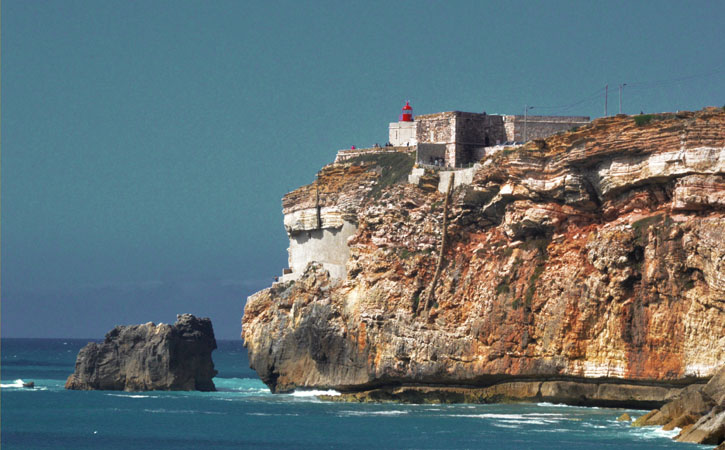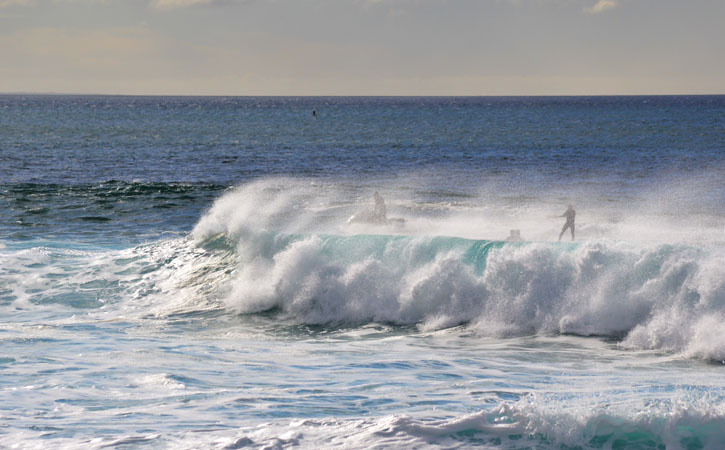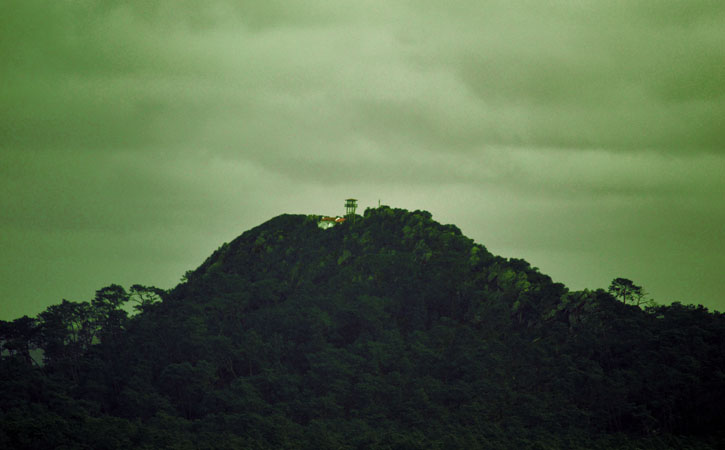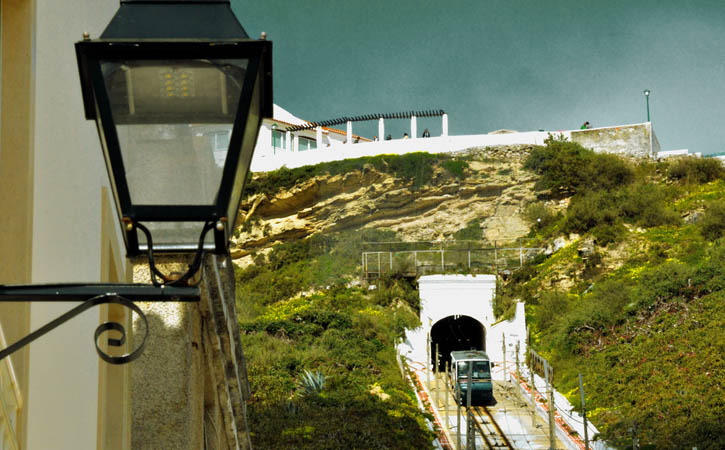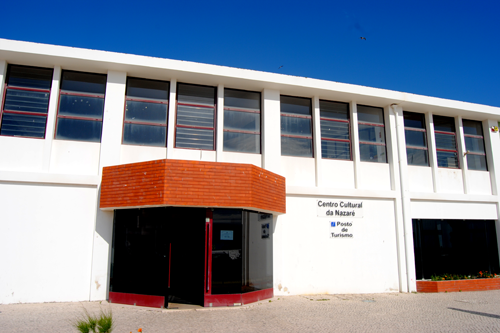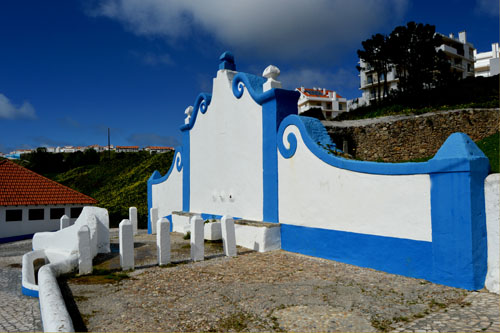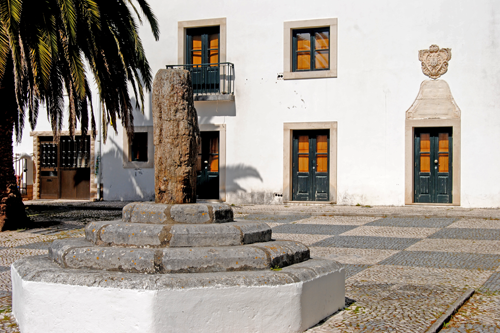The 10 Best Things to do in Nazare
Today we bring you the best Things to do in Nazare. Lay back and explore & discover the best tips we have to give.
Fort of São Miguel Arcanjo
Of all the mandatory visits you have to do in Nazare it starts with the Fort, built in the 16th century, more specifically in the reign of the king D. Sebastião.
The coastal fortification network was integrated in the scope of the Restoration of Independence in the following century, when at the initiative of D. João IV it was increased.
At the beginning of the 19th century, the São Miguel Arcanjo Fortess was the central stage during the French Invasions, having been occupied, and shortly afterwards it also stood out during the liberal struggles, still maintaining traces of the changes experienced during that period.
Nossa Senhora da Nazare Sanctuary
Built in the 14th century by order of D. Fernando, the Nossa Senhora da Nazare Sanctuary, is the oldest Marian Sanctuary in Portugal and is linked to the Legend of Nazare and D. Fuas Roupinho.
In that place and in function of the Sanctuary the Sítio da Nazaré and the village itself developed.
The Sanctuary of Nossa Senhora da Nazaré has been refurbished several times over the centuries and has been classified as a Property of Public Interest since 1978.
It is therefore an indispensable place to visit not only for its historical and religious importance but also for the artistic elements that are possible to contemplate in the church, with emphasis on the tiles of the 18th century.
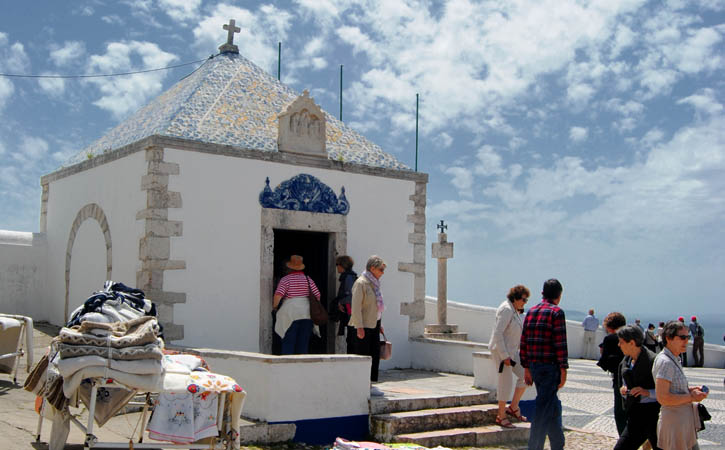
Built in the 14th century, over the legendary cave of Nazare, the Memória Chapel, like the Nossa Senhora da Nazare Sanctuary, is linked to the Legend of Nazare and the unavoidable D. Fuas Roupinho.
The roof of the vault of Memória Chapel is also covered with figurative tiles depicting D. Fuas Roupinho, which you cannot fail to contemplate.
Its connection to the Legend of Nazare makes Memória Chapel one of the most visited places not only by pilgrims but also by tourists and the curious, and a visit to the place is mandatory.
North Beach
Located north of Sítio da Nazare, hence its name, the North Beach offers exceptional conditions for the practice of sports activities such as surfing, kitesurfing, windsurfing or bodyboarding, which have been bringing new audiences and this beach that became known for the giant waves produced by the famous Canhão da Nazare.
A must see in our 10 Best Things to do in Nazare!
It was precisely in North Beach that on November 1, 2011, the Hawaiian surfer Garrett McNamara surfed one of the candidates for “Biggest Wave of 2011”, thus recognized by the nomination for this category by the Billabong XXL Global Big Wave Awards 2012.
Between waves and more waves, this record was broken by the Frenchman Benjamin Sanchis in 2014 … with a wave of 33 meters!
São Bartolomeu Mount
Classified as a Site of Biological Interest the São Bartolomeu Mount in Nazare stands out for its geological, natural and historical component.
Also known as São Brás Mount, it has a magmatic origin and is inserted in a landscape that belongs to the famous Pinhal de Leiria, with the maritime pine and the arbutus tree being some of the elements of the local flora that stand out the most.
With regard to avifauna, the Sieve and the Winged Round Eagle deserve a mention.
From the historical point of view, São Bartolomeu Mount or São Brás presents in its nomenclature clear allusions to two of the saints whose relics are linked to the Legend of Nazare and the foundation of the locality.
At a height of 156 meters, its summit is accessible on foot and you will certainly want to stroll in the middle of nature and see the natural beauty of the place, and there is also a small chapel that also deserves a close look.
During Carnival, there is the pilgrimage to São Brás, a profane-religious party held on February 3rd and that you can always attend.
Whether you prefer the landscape component, or prefer the more historical and cultural aspect São Bartolomeu Mount is worth visiting.
Nazare Lift
Opened in 1889, the Nazare Lift is a funicular and an excellent example of transport architecture.
Add to that the fact that the Nazare Lift was designed by Eng. Raul Mesnier du Ponsard, disciple of the famous French engineer Gustave Eiffel, and responsible, among others, for the Elevador da Glória in Lisbon.
The purpose of building the Nazare Lift (also known as Elevador da Nazaré) was to allow easier access to the Nossa Senhora da Nazare Sanctuary, located at the top of the hill, at Sítio da Nazare, a pilgrimage site over the years.
Cultural Center
Located on Avenida Manuel Remígio, in the premises of the former fish market in Nazare, right in front of Nazare Beach, the Cultural Center of Nazare is first of all a building with history since it was built with the aim of bringing better conditions for the sale of the fish in this fishermen land.
Nowadays, although fishing remains one of the most characteristic activities in the village of Nazare, the sale of fish is no longer made in this building.
Since 1995, it has been a space where all kinds of cultural events take place, being a mandatory place for all those for whom culture is mandatory.
However, the functionalities of the Cultural Center of Nazare are not limited to their cultural aspect.
Old Foutain
Also known as Fonte da Vila, the Old Fountain in Nazare was built in the 18th century, being an example of Baroque architecture typical of that and also being a very popular water supply infrastructure at that time.
The Old Fountain, has been the subject of improvement works over time.
In spite of everything, the Fountain is not currently in the best conditions although it is still an excellent example of the local heritage and an important testimony of other times.
Located on the road that connects Nazare to Pederneira, you will certainly have the opportunity to discover this gem while traveling to any of the parishes, full of interesting reasons.
Old Pederneira City Hall
The Old Pederneira City Hall in Nazaré was built in the 16th century at a time when the town of Pederneira belonged to the administration of the Monastery of Alcobaça and was the seat of the municipality.
The building functioned as Paços do Concelho da Pederneira until 1855, and was subsequently renovated.
When the municipality of Pederneira was extinguished, the Old Town Hall of Pederneira started to have other diverse functions, highlighting its use as a butcher, but also as a court, jail or even as a primary school.
Pederneira Pillory
The Pederneira Pillory in Nazare is a distinct example of political-administrative and judicial architecture.
Its construction dates from 1514, the year in which Pederneira obtained a charter from D. Manuel I, thus establishing the political and administrative importance of the place in the region.
Its location close to the Old Pederneira City Hall further bases its importance and significance and gives it a prominent place as is usual in this type of infrastructure.
With the extinction of the municipality of Pederneira in 1855 due to the growth of Nazare and its beach, the original Pelourinho was removed and later replaced by a fossilized trunk, still becoming a popular symbol with historical and cultural relief, which earned it Classification as a Property of Public Interest in 1933.
The Pederneira Pillory is therefore a landmark of local history as well as a curious and unmissable cultural attraction that you should not miss.
Still at Praça Bastião Fernandes you can find the aforementioned Old Pederneira City Hall and the Church of Santa Casa da Misericórdia da Pederneira.
In the parish of Pederneira you also deserve your visit to the Parish Church of Pederneira.
Tours in the Silver Coast Region
if you want to do a tour in the Silver Coast region book with us and have a great experience.

